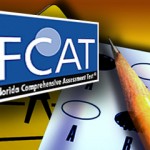Meet The New SAT
The new SAT will take a little less time, focus on words students are more likely to encounter and have fewer answers for each multiple choice question, according to a preview from the College Board, to non-profit which oversees the college entrance exam.
Changes to the SAT are particularly important in Florida, because the Sunshine State has pushed hard to have more students take college entrance exams each year. In addition, SAT and ACT scores can exempt Florida students from taking the state’s college placement exam. The scores can also be used as a substitute for the 10th grade FCAT exam required for graduation.
College Board president David Coleman is the same guy who helped lead development of the Common Core State Standards fully adopted by 44 states including Florida. The SAT changes will incorporate ideas and concepts emphasized in Common Core.
Here’s how things will change overall and why, according to College Board’s Chief of Assessment Cynthia Schmeiser, from the Huffington Post:
According to the Wednesday release, the new SAT is expected to take 3 hours (without optional essay; one is allowed an additional 50 minutes for the essay) instead of the current 3 hours and 45 minutes. Test results provided to students will break down beyond the notorious composite scores: they’ll also receive “cross-test scores” that show how they performed in different subjects, such as history, social science and science scores, based on questions from various sections.
“It is our goal that the redesigned SAT reflects students’ best work, not something that is separate and distinct from their work in high school,” Schmeiser said, “but a distillation of what they’ve learned in high school … so that when they come to the test, it won’t be something different; it will be, ‘Oh yes, this is something I recognize.'”
The new test will have two sections: math and evidence-based reading. The reading section will be based on previously published passages, and will include a “writing and language” portion that requires students to analyze and revise essays. A full 80 percent of the reading passages will be nonfiction, with one passage in literature, two passages on history/social studies, and two passages in science. The reading section will include graphics.
The Wire cites this example of how questions will change on the language arts section:
So students prepping for the new vocab tests will have to learn a new test-taking trick for this section. Instead of plugging in a memorized definition, test-takers will read a short passage and answer questions about a “tier two” word used in context. The College Board provided this as a sample question:
[. . .] The coming decades will likely see more intense clustering
of jobs, innovation, and productivity in a smaller number of bigger
cities and city-regions. Some regions could end up bloated beyond the capacity of their infrastructure, while others struggle, their promise stymied by inadequate human or other resources.
Adapted from Richard Florida, The Great Reset.As used in line 55, “intense” most nearly means
A) emotional.
B) concentrated.
C) brilliant.
D) determined.“While students may frequently use the word ‘intense’ to describe personalities or emotions,” the College Board explains, “the context of this sentence requires students to recognize that “intense” can also mean ‘concentrated.'” The SAT referred to another possible example of this context-based approach to vocabulary testing in the SAT’s Reading Section: the different ways in which Lincoln uses the word “dedicate” in the Gettysburg Address. That specific example, by the way, is also used in a Common Core teaching unit on the famous speech.
Students will start taking the redesigned exam in 2016. The College Board has created a website to explain the changes here.


